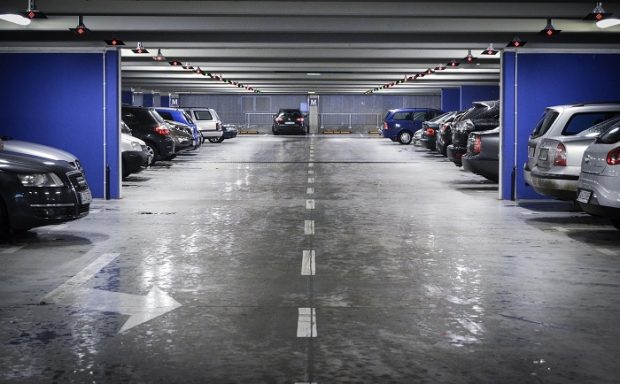Is Carpooling the Future? 5 Reasons Why You Should Hitch a Ride Today!
In today’s fast-paced world, where concerns about environmental sustainability and the cost of living are on the rise, carpooling is gaining significant attention as a practical solution to many of our transportation problems. This article explores the potential future of carpooling and presents five compelling reasons why you should consider hitching a ride today.
Carpooling, once seen as an occasional convenience, is now emerging as a potential solution to various transportation challenges. With growing concerns about the environment, traffic congestion, and individual financial burdens, it’s time to explore why carpooling might be the future of commuting.
Reduced Environmental Impact
1.1 Decreased Carbon Footprint
Carpooling is an eco-friendly choice as it reduces the number of vehicles on the road, which, in turn, lowers carbon emissions. Fewer cars mean less air pollution, contributing to a cleaner and healthier environment.
1.2 Congestion and Air Quality
Reducing traffic congestion through carpooling not only saves time but also improves air quality. With fewer vehicles idling in traffic jams, the air becomes less polluted, benefitting both the environment and our respiratory health.
Cost Savings
2.1 Fuel and Maintenance Expenses
Sharing a ride allows you to split fuel and maintenance costs, significantly reducing your transportation expenses. This financial relief can be especially appealing in times of rising gas prices.
2.2 Shared Costs
In addition to fuel and maintenance, carpoolers can also share the costs of tolls, parking fees, and even insurance premiums. This collaborative approach can put more money back in your wallet.
Time Efficiency
3.1 HOV Lanes
Many cities have designated High Occupancy Vehicle (HOV) lanes, reserved for vehicles with multiple passengers. Carpoolers can take advantage of these lanes, often bypassing heavy traffic and reaching their destinations faster.
3.2 Reduced Commute Stress
Sharing your commute with others can turn a stressful solo journey into a pleasant and social experience. Conversations, shared responsibilities, and a sense of camaraderie can make your daily commute more enjoyable.
Social Benefits
4.1 Building Connections
Carpooling offers a unique opportunity to connect with fellow commuters. You might make new friends, expand your professional network, or simply enjoy engaging conversations during your rides.
4.2 Enhanced Safety
Traveling with others can enhance your safety, especially during late-night or early-morning commutes. Having company can provide peace of mind and reduce the risk of accidents or emergencies going unnoticed.
Challenges and Concerns
5.1 Scheduling Conflicts
While carpooling has numerous advantages, coordinating schedules with fellow riders can be challenging. It’s essential to establish clear communication and expectations to avoid conflicts.
5.2 Privacy Concerns
Some individuals may have reservations about sharing their personal space with strangers. Carpooling apps often provide safety features and user reviews to address these concerns.
How to Get Started?
To embrace carpooling, you can start by finding potential carpool partners among your friends, colleagues, or neighbors. Alternatively, consider using dedicated carpooling apps and platforms to connect with compatible riders.
Carpooling Apps and Platforms
Several apps and websites are available by matching riders traveling in the same direction. These platforms provide a user-friendly way to find suitable carpooling options.
Real-Life Carpooling Success Stories
Discover real-life stories of individuals who have benefited from carpooling. These narratives can provide valuable insights and motivation to start your carpooling journey.
Conclusion
Carpooling has the potential to revolutionize our daily commutes, offering benefits that encompass environmental, financial, and social aspects. By reducing our carbon footprint, saving money, and enhancing our daily experiences, carpooling may indeed be the future of transportation.
Ready? Let’s go Register Now!
FAQs:
Yes, carpooling is generally safe, and many carpooling platforms have safety features in place. It’s essential to choose reputable platforms and communicate with your fellow carpoolers to ensure a safe experience.
You can find carpooling partners among friends, colleagues, or neighbors. Alternatively, you can use carpooling apps and websites to connect with potential riders.
Yes, carpooling can save you money by sharing fuel, maintenance, and other transportation costs with fellow carpoolers.
Yes, carpooling reduces traffic congestion by reducing the number of vehicles on the road, which can lead to smoother and quicker commutes for everyone.
To avoid last-minute cancellations, establish clear communication and expectations with your carpooling partners. Some platforms also have cancellation policies in place to address this issue.
In conclusion, carpooling is not just a ride-sharing option; it’s a step towards a more sustainable and connected future. By reducing our carbon footprint, saving money, and enjoying the social aspects of commuting, carpooling is indeed a compelling choice for those looking to make a positive impact on their lives and the environment. So, why wait? Join the carpooling revolution today!










